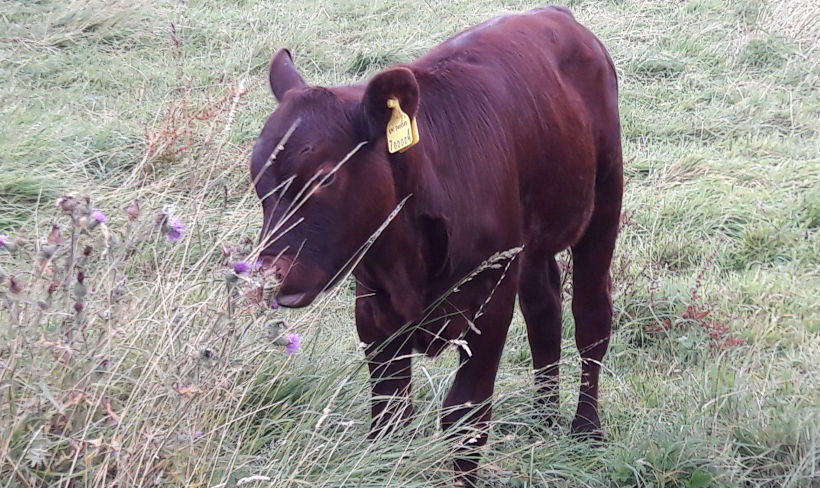Diarrhoea in New-Born Calves
For many suckler herds, spring is calving time and the new crop of calves will bring their own set of challenges. Newly born calves face many challenges in their first three weeks of life – one of the most serious (and common) is diarrhoea.
Calf Diarrhoea (“Scour”)
Scouring calves are common to most cattle farmers. Diarrhoea in young animals can be devastating, with progression from vigorous calf, to recumbency and death being at times rapid, so prompt treatment in all cases is essential.
The major causes of diarrhoea in young calves are:
- Viruses : rotavirus, coronavirus
- Bacteria : ETEC (E.coli), Salmonella
- Protozoan (parasite) : Cryptosporidium
Studies have shown the most common of these are rotavirus and cryptosporidium, with ETEC (E.coli) being relatively rare, causing less than 5% of cases. As vets, we are often asked what the cause of a particular scour is with a view to a specific cure. However, probably more important is addressing the factors which allow calves to contract the disease initially (prevention really is better than cure!)
Hygiene
Cleanliness in the calving pen is paramount. Calving cows repeatedly in the same pen without cleaning out, or at least adding a good layer of clean, dry straw between occupants, is asking for problems. Outdoor calving is better still, with cows being moved to the maternity field a few days prior to calving. Ideally, a few days after calving, the cow and calf should be moved to a “nursery” field.
Hygiene should extend to calving equipment as well: ropes and calving aids (“calf pullers”) should be thoroughly cleaned after each use. Anybody assisting a calving should also wash hands and arms thoroughly, or wear arm-length gloves. Calf housing should be clean and dry. Ventilation should be good, but without draughts. (Remember to get down to calf level to check the air quality – 13 ventilation close to the ground, below the level of hurdles, bales and low walls, may be significantly different from the air you are breathing five or six-feet above).
One area of hygiene often neglected is that of the dam – faeces encased teats are not a great place for a new-born calf to suckle!
Colostrum Intake
Six pints in six hours!! The first six hours are key as the ability of the calf’s intestine to absorb the large antibody molecules decreases quickly. Aim to ensure a colostrum intake of 3 litres (six pints) in the first six hours. It is worth keeping a stock of frozen colostrum in two litre containers ready to give to any calves you suspect may not have suckled enough. Ideally, milk this store of colostrum from your own cows; it will contain antibodies against the diseases present on your farm. There is currently much concern over the spread of Johne’s disease in cattle through the sharing of colostrum – again, a good reason for using colostrum from your own cows (ideally of known Johne’s status).Vaccines such as Rotavec afford protection to the calf (via the vaccinated cow’s colostrum) against rotavirus, coronavirus and ETEC (E.coli).
Treatment
Diarrhoea generally kills calves due to fluid loss. The massive quantities of fluid lost by a scouring calf causes dehydration and shock. This leads to an electrolyte imbalance and a serious condition known as metabolic acidosis. The key to treatment is therefore fluid replacement therapy.
Generally, if the calf is still standing, then oral fluids should be given. If the calf will still suck, they should be given from a bucket/bottle and teat, if not then a suitable calf stomach tube feeder should be used. If the calf is collapsed, you should call your vet immediately so that intravenous fluids can be given.
The World Health Organisation described oral rehydration-fluid therapy (ORT) as the most significant medical advance of the 20th 14 century. There are a number of ORT products available for calves (e.g. Lectade, Effydral, Glutalyte), as powders, tablets or gels to add to water or milk. Generally, in my opinion, and regardless of instructions that come with the product, it is better to give multiple, small quantities of fluid (little and often). Additionally, watering down milk may affect the calf’s ability to clot and digest the milk, therefore I would recommend alternating ORT and milk feeds.
Traditionally, milk has been withheld from scouring calves, as it will often worsen scouring. However, starving the gut of nutrients will impair the body’s ability to repair the gut and possibly lead to further damage. Therefore, as long as the fluid loss associated with diarrhoea is being addressed (through ORT) then milk should continue to be fed. Studies have shown that the amount and consistency of scour is a poor indicator of the likely progress of the disease. The most important assessment you can make of your calf is, “Is he happy?” If at any point the calf becomes depressed and recumbent, then veterinary help should be sought.
Antibiotics?
As the majority of calf scours are caused by viruses and protozoal parasites, then antibiotics will not be of any benefit in the majority of cases. They should be reserved for cases suspected to be caused by ETEC (E.coli) or Salmonella. In light of concerns regarding the development of antibiotic resistance, the practice of routinely giving newly born calves antibiotics should be actively discouraged.
Summary
- - Hygiene – minimise the calf’s exposure to pathogens
- - Colostrum – 6 pints in 6 hours
- - Oral fluid therapy – little and often
- - Demeanour – depressed/recumbent – call the vet!
Gareth Parry BVSc MRCVS
Hampton Veterinary Group, Malpas, Cheshire

